In the rapidly evolving landscape of modern construction, the demand for sustainable, efficient, and innovative housing solutions has never been greater. As urban populations swell, environmental concerns intensify, and the need for flexible living spaces grows, the construction industry faces unprecedented challenges. Amid this transformative era, one company has emerged as a trailblazer: Lida Group. Renowned for its commitment to innovation and sustainability, Lida Group is redefining the future of housing with its cutting-edge prefabricated container buildings—specifically, its Smart Mobile Modern Container House. This revolutionary product combines eco-conscious design, modular construction techniques, and advanced smart technology to offer a housing solution that is not only practical and cost-effective but also environmentally responsible and highly adaptable to diverse needs.
The concept of using shipping containers as building materials is not entirely new. For decades, architects and designers have repurposed retired cargo containers into temporary shelters, pop-up shops, and even permanent homes. However, Lida Group has taken this concept to an entirely new level. By integrating state-of-the-art engineering, sustainable materials, and intelligent systems, the company has transformed the humble shipping container into a sophisticated, high-performance living space. The Smart Mobile Modern Container House is not just a shelter—it is a fully integrated, energy-efficient, and mobile dwelling designed for the 21st century.
What sets Lida Group apart is its holistic approach to sustainable construction. The company recognizes that the traditional construction industry is one of the largest contributors to global carbon emissions, resource depletion, and waste generation. In response, Lida Group has developed a model that minimizes environmental impact from the very beginning of the building process. By utilizing recycled shipping containers as the primary structural component, the company reduces the need for new raw materials and repurposes existing industrial assets. Furthermore, the prefabricated nature of the Smart Mobile Modern Container House allows for factory-based construction, which significantly reduces on-site waste, noise pollution, and construction time.
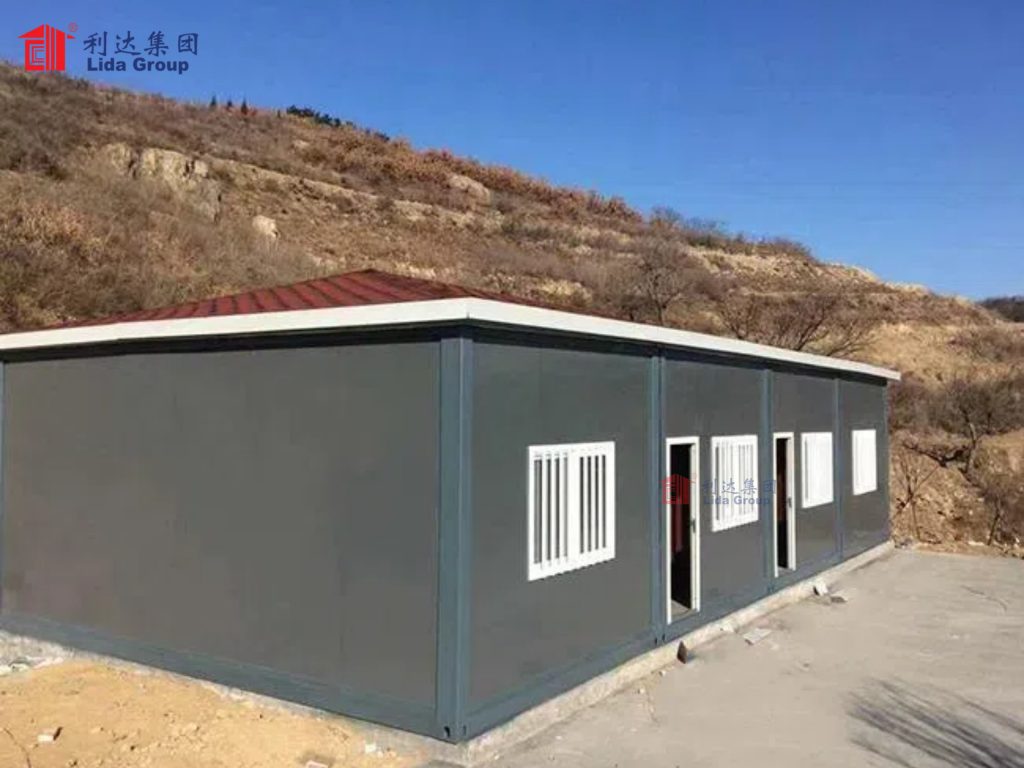
But sustainability is only one facet of Lida Group’s innovation. The Smart Mobile Modern Container House is also a marvel of modern engineering and design. Each unit is meticulously crafted to maximize space, comfort, and functionality. The interior features open-concept layouts, high-quality finishes, and customizable configurations to suit a wide range of applications—from single-family homes and vacation cabins to office spaces, emergency shelters, and hospitality units. What truly distinguishes these container homes, however, is their integration of smart technology. Equipped with IoT (Internet of Things) devices, automated climate control, energy monitoring systems, and remote access capabilities, these homes offer residents unprecedented control over their living environment. Whether adjusting the temperature from a smartphone, monitoring energy usage in real time, or enhancing security through smart locks and surveillance, the Smart Mobile Modern Container House delivers a seamless and intuitive user experience.
Moreover, the mobility of these units adds another layer of versatility. Unlike traditional homes, which are fixed in place, Lida Group’s container houses can be easily transported and reassembled in different locations. This makes them ideal for temporary housing needs, disaster relief operations, remote work sites, and even nomadic lifestyles. The ability to relocate a fully functional, modern home with minimal disruption is a game-changer in the housing industry. It empowers individuals and organizations to adapt quickly to changing circumstances, whether due to economic shifts, natural disasters, or personal preferences.
Lida Group’s commitment to innovation is also evident in its rigorous quality control and safety standards. Every Smart Mobile Modern Container House undergoes extensive testing to ensure structural integrity, thermal efficiency, and resistance to extreme weather conditions. The company employs advanced insulation materials, energy-efficient windows, and durable exterior coatings to enhance performance and longevity. Additionally, Lida Group adheres to international building codes and certifications, ensuring that its products meet or exceed safety and environmental regulations in various markets.
Beyond the technical and functional aspects, Lida Group is also contributing to a broader cultural shift in how we think about housing. In an age where sustainability, flexibility, and affordability are paramount, the Smart Mobile Modern Container House represents a paradigm shift. It challenges the notion that eco-friendly homes must be expensive, inconvenient, or aesthetically unappealing. Instead, Lida Group demonstrates that sustainable living can be stylish, comfortable, and accessible to a wide range of consumers. By making green technology and modular design mainstream, the company is helping to democratize sustainable housing and inspire a new generation of builders and homeowners.
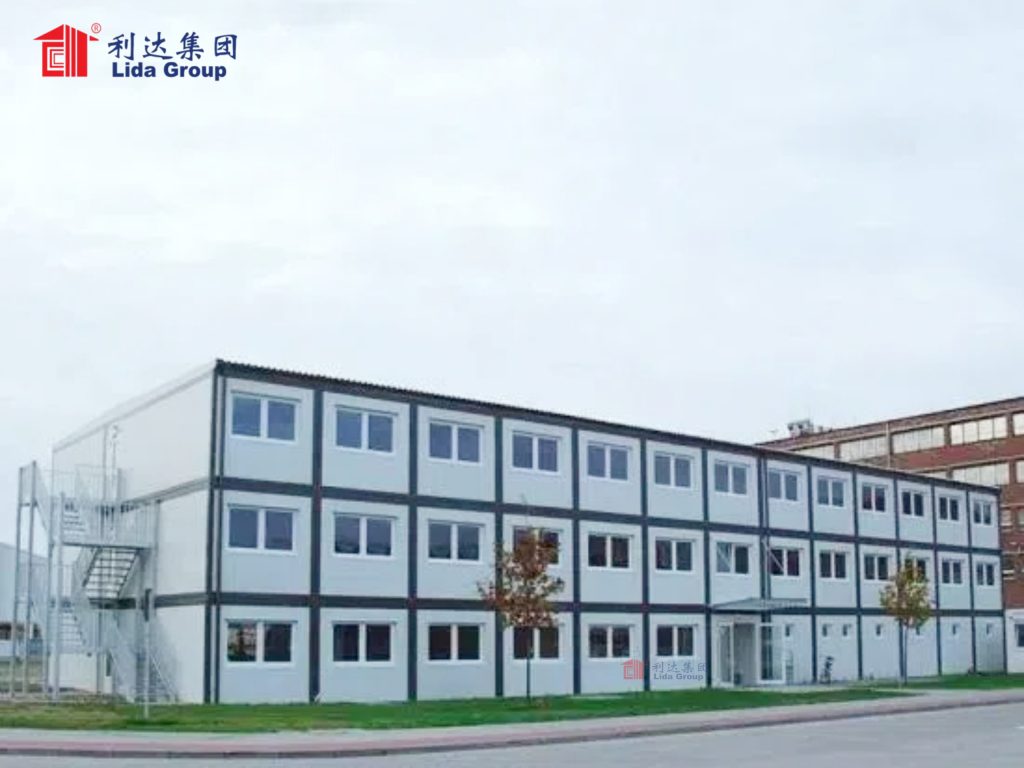
This article will explore in depth the various dimensions of Lida Group’s pioneering work in eco-friendly prefabricated container buildings. We will examine the technological innovations behind the Smart Mobile Modern Container House, analyze its environmental benefits, discuss its diverse applications across different sectors, and evaluate its potential to reshape the future of the construction industry. Through interviews with engineers, architects, and satisfied customers, we will gain insight into the real-world impact of this revolutionary product. Ultimately, we will see how Lida Group is not just building homes—it is building a more sustainable, resilient, and equitable future for all.
**The Evolution of Prefabricated Construction: A Historical Perspective**
To fully appreciate the significance of Lida Group’s achievements, it is essential to understand the historical context of prefabricated construction. The idea of assembling buildings from pre-manufactured components dates back centuries, but it gained widespread attention during the Industrial Revolution. As mass production techniques transformed manufacturing, visionaries began to apply similar principles to housing. One of the earliest examples was the “kit house” phenomenon of the early 20th century, particularly in the United States. Companies like Sears, Roebuck and Co. sold complete home kits via mail-order catalogs, allowing customers to assemble their houses from pre-cut lumber and detailed instructions. These homes were affordable, efficient, and relatively quick to build, making homeownership accessible to a broader segment of the population.
The mid-20th century saw further advancements in prefabrication, driven by post-war housing shortages and the need for rapid reconstruction. In Europe and Japan, governments turned to prefabricated concrete and steel structures to quickly house displaced populations. While these early prefab homes were often criticized for their uniformity and lack of aesthetic appeal, they demonstrated the potential of factory-based construction to deliver large volumes of housing in a short time. Over the decades, improvements in materials, design, and manufacturing processes gradually enhanced the quality and versatility of prefabricated buildings.
The modern era of prefabrication, however, has been shaped by two major forces: technological innovation and environmental awareness. The advent of computer-aided design (CAD), Building Information Modeling (BIM), and advanced robotics has revolutionized the way buildings are designed and assembled. These technologies enable precise planning, efficient material use, and seamless coordination between design and production teams. At the same time, growing concerns about climate change, resource scarcity, and urbanization have pushed the construction industry to seek more sustainable alternatives to traditional building methods.
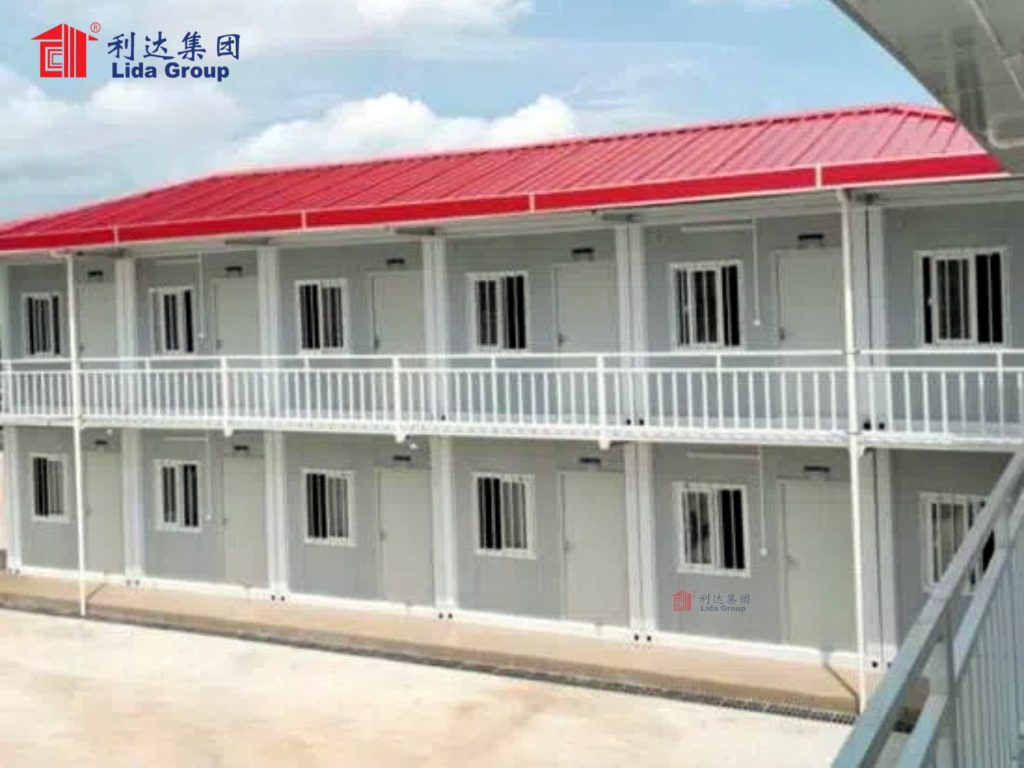
It is within this context that container-based construction has emerged as a compelling solution. The idea of using shipping containers as building blocks gained traction in the 1980s, thanks to the work of architects like Philip C. Clark, who patented a method for converting containers into habitable structures. The appeal was clear: shipping containers are inherently strong, standardized, and widely available. With over 17 million containers in global circulation and thousands retired each year, there is a vast supply of potential building materials. Moreover, their modular dimensions make them ideal for stacking and combining into larger structures.
Early adopters of container architecture focused primarily on temporary or experimental projects—art installations, pop-up retail spaces, and student housing. While these projects showcased the creative potential of container buildings, they often lacked the insulation, comfort, and regulatory compliance needed for permanent residential use. Many early container homes suffered from issues such as poor thermal performance, condensation, and structural weaknesses due to improper modifications.
Lida Group recognized both the promise and the limitations of early container architecture. Rather than simply repurposing containers as-is, the company invested in research and development to overcome the technical challenges. Engineers at Lida Group studied the structural properties of shipping containers, analyzed thermal dynamics, and tested various insulation and finishing materials. They developed proprietary techniques for reinforcing container walls, sealing joints, and integrating utilities without compromising integrity. The result was a new generation of container homes that were not only structurally sound but also energy-efficient, weather-resistant, and aesthetically pleasing.
One of the key innovations was the development of a hybrid construction system. Instead of relying solely on standard shipping containers, Lida Group introduced modified container modules that could be combined with lightweight steel frames and prefabricated wall panels. This approach allowed for greater design flexibility, enabling the creation of custom floor plans, larger windows, and multi-story configurations. It also improved thermal performance by reducing thermal bridging—a common issue in all-steel container structures.
Another critical advancement was the integration of smart technology. While earlier prefab homes focused primarily on physical construction, Lida Group understood that the future of housing lies in connectivity and automation. By embedding sensors, controllers, and communication modules into the building fabric, the company created homes that could adapt to the needs of their occupants. From automated lighting and climate control to remote monitoring and energy management, the Smart Mobile Modern Container House represents the convergence of physical and digital innovation.
Lida Group’s approach also reflects a broader shift in the construction industry toward “circular economy” principles. Rather than following the traditional “take-make-dispose” model, the company emphasizes reuse, recycling, and resource efficiency. By repurposing shipping containers, using sustainable insulation materials, and designing for disassembly and relocation, Lida Group minimizes waste and extends the lifecycle of building components. This not only reduces environmental impact but also lowers long-term costs for owners and operators.
In summary, the evolution of prefabricated construction has been a journey from simple, utilitarian structures to sophisticated, high-performance buildings. Lida Group stands at the forefront of this evolution, combining historical lessons with cutting-edge technology to create a new paradigm in sustainable housing. The Smart Mobile Modern Container House is not just a product—it is a symbol of progress, innovation, and responsibility in the built environment.
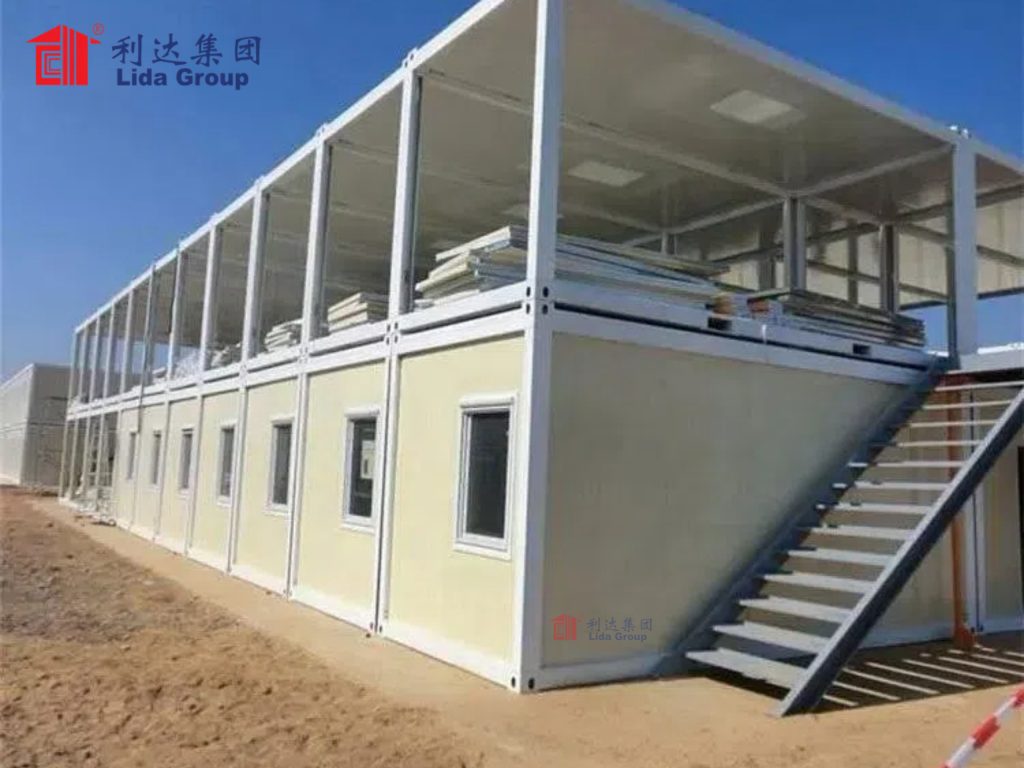
**Core Features of the Smart Mobile Modern Container House**
The Smart Mobile Modern Container House by Lida Group is a testament to the seamless integration of form, function, and technology. Designed with both practicality and elegance in mind, this innovative housing solution offers a range of core features that set it apart from conventional and even other prefabricated homes. At the heart of its design is a commitment to sustainability, efficiency, and user-centric living, all encapsulated within a compact, modular framework.
One of the most defining characteristics of the Smart Mobile Modern Container House is its modular construction. Built primarily from repurposed shipping containers, each unit is manufactured in a controlled factory environment, ensuring consistent quality and precision. The modular design allows for easy customization and scalability. Customers can choose from a variety of standard configurations—ranging from a compact 20-foot studio to a spacious 40-foot two-bedroom home—or opt for a fully customized layout. Multiple modules can be combined horizontally or vertically to create larger dwellings, office complexes, or even multi-unit residential buildings. This flexibility makes the container house suitable for a wide array of applications, from single-family homes to temporary housing for disaster relief or construction crews.
Thermal efficiency is another cornerstone of the Smart Mobile Modern Container House. Traditional metal containers are prone to heat transfer, leading to uncomfortable indoor temperatures in extreme climates. To address this, Lida Group has developed a multi-layered insulation system that includes high-performance materials such as spray foam, mineral wool, and reflective barriers. These materials are strategically installed within the walls, roof, and floor to minimize thermal bridging and maximize energy retention. The result is a home that stays cool in summer and warm in winter, significantly reducing the need for artificial heating and cooling. Additionally, the container house features energy-efficient double-glazed or triple-glazed windows with low-emissivity (low-E) coatings, further enhancing thermal performance and reducing energy consumption.
Durability and weather resistance are also paramount in the design. The exterior of the container house is treated with anti-corrosion coatings and protective finishes that withstand harsh environmental conditions, including heavy rain, snow, and UV exposure. Reinforced structural elements ensure that the building can endure high winds and seismic activity, making it suitable for use in diverse geographic regions. The roof is designed with a slight pitch to facilitate water runoff and can be equipped with solar panels or green roofing systems for added sustainability.
Interior design plays a crucial role in maximizing comfort and usability. Despite the compact footprint, the Smart Mobile Modern Container House feels spacious and inviting thanks to thoughtful space planning and high-quality finishes. Open-concept layouts, minimalist furniture, and built-in storage solutions optimize every square foot. Natural light is maximized through strategically placed windows and skylights, creating a bright and airy atmosphere. Interior walls are finished with eco-friendly materials such as recycled wood paneling, non-toxic paints, and sustainable flooring options like bamboo or cork. These choices not only enhance aesthetics but also contribute to healthier indoor air quality.
The true innovation of the Smart Mobile Modern Container House lies in its integration of smart technology. Every unit is equipped with a comprehensive IoT ecosystem that connects various home systems and allows for remote monitoring and control. A central smart hub serves as the brain of the house, coordinating functions such as lighting, climate control, security, and energy management. Residents can access the system via a mobile app or voice-activated assistant, enabling them to adjust settings from anywhere in the world.
For example, the climate control system uses smart thermostats and sensors to maintain optimal indoor temperatures based on occupancy and weather conditions. It learns user preferences over time and automatically adjusts heating or cooling to conserve energy. Lighting is equally intelligent, with motion sensors and daylight harvesting features that turn lights on or off based on activity and natural light levels. Energy-efficient LED fixtures are used throughout the home, further reducing electricity consumption.
Security is another key component of the smart system. The container house is equipped with smart locks, surveillance cameras, motion detectors, and alarm systems that can be monitored in real time. Users receive instant alerts on their smartphones if any unusual activity is detected, and they can remotely lock or unlock doors, view live camera feeds, or contact emergency services if needed. Some models also include biometric access control for added convenience and security.
Energy management is seamlessly integrated into the smart ecosystem. The container house can be powered by a combination of grid electricity and renewable sources such as solar panels or wind turbines. An energy monitoring dashboard provides real-time data on power generation, consumption, and storage, allowing users to track their energy usage and identify opportunities for savings. Battery storage systems enable off-grid operation, making the home ideal for remote locations or emergency situations.
In addition to these core features, the Smart Mobile Modern Container House is designed for ease of transport and rapid deployment. Each unit is mounted on a reinforced chassis with wheels or lifting points, allowing it to be transported by truck, ship, or crane. On-site assembly typically takes only a few hours, requiring minimal labor and equipment. This makes the container house an ideal solution for temporary housing, disaster relief, military operations, and remote work sites.
Finally, Lida Group places a strong emphasis on sustainability throughout the product lifecycle. From the sourcing of recycled materials to the end-of-life recyclability of components, every aspect of the container house is designed with environmental responsibility in mind. The company also offers optional green features such as rainwater harvesting systems, composting toilets, and greywater recycling, further reducing the home’s ecological footprint.
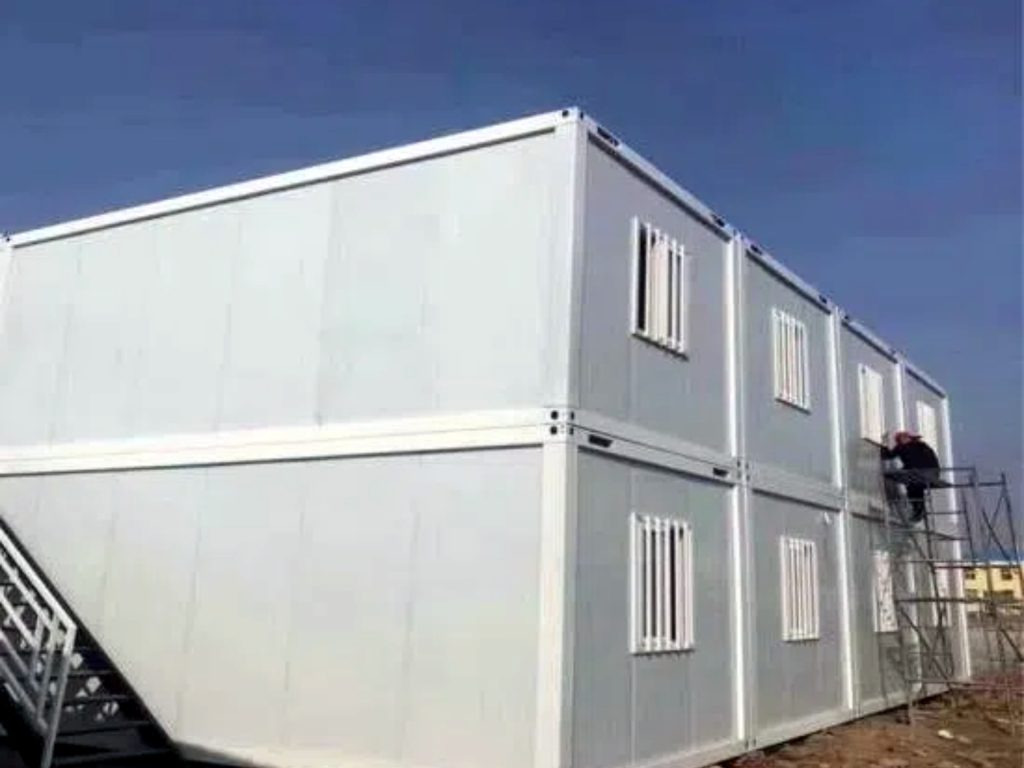
**Environmental and Economic Benefits of Lida Group’s Container Houses**
The environmental and economic advantages of Lida Group’s Smart Mobile Modern Container House extend far beyond its innovative design and smart technology. By reimagining the construction process and embracing sustainable practices, Lida Group is setting a new standard for eco-friendly building. The environmental benefits are profound, beginning with the very foundation of the structure: the repurposing of retired shipping containers. Each year, millions of steel shipping containers are decommissioned from global trade, many of which end up in landfills or are scrapped for raw materials. Lida Group intercepts this waste stream by transforming these durable, high-strength containers into habitable spaces, effectively giving them a second life. This process significantly reduces the demand for new steel production, which is one of the most carbon-intensive industries in the world. According to industry estimates, recycling one ton of steel saves approximately 1.5 tons of iron ore, 0.5 tons of coal, and 70% of the energy required for primary steel production. By utilizing existing containers, Lida Group dramatically lowers the embodied energy of its buildings and contributes to a circular economy.
Beyond material reuse, the prefabricated nature of the Smart Mobile Modern Container House minimizes construction waste. Traditional on-site building methods often result in significant material overruns, off-cuts, and debris. In contrast, factory-based manufacturing allows for precise cutting, inventory control, and recycling of excess materials. Lida Group reports that its production process generates up to 90% less waste compared to conventional construction. Moreover, the controlled environment of the factory ensures higher quality and consistency, reducing the likelihood of defects and rework, which further conserves resources.
Energy efficiency is another critical environmental benefit. The advanced insulation, energy-efficient windows, and passive solar design principles employed in the container house drastically reduce the need for heating and cooling. This translates into lower energy consumption and reduced greenhouse gas emissions over the building’s lifetime. When combined with integrated solar panels and battery storage, many Smart Mobile Modern Container Houses can achieve net-zero or even energy-positive status, generating more power than they consume. This not only benefits the environment but also enhances energy independence for homeowners, particularly in off-grid or remote locations.
Water conservation is also addressed through optional sustainable features. Rainwater harvesting systems collect and store precipitation for non-potable uses such as irrigation and toilet flushing. Greywater recycling systems treat and reuse water from sinks, showers, and laundry, reducing overall water demand. Composting toilets eliminate the need for water-intensive sewage systems and convert waste into nutrient-rich compost, further closing the resource loop.
From an economic standpoint, Lida Group’s container houses offer compelling advantages. The factory-based production model reduces construction time by up to 60% compared to traditional building methods. This accelerated timeline translates into lower labor costs, reduced financing expenses, and faster occupancy. For developers, governments, and humanitarian organizations, this speed is invaluable in addressing housing shortages, disaster recovery, or infrastructure projects.
The modular and mobile nature of the container house also provides long-term cost savings. Unlike permanent structures, these homes can be relocated as needs change, avoiding the expense of demolition and new construction. This adaptability makes them ideal for temporary or transitional housing, seasonal use, or businesses with mobile operations. Additionally, the durability and low maintenance requirements of the steel structure ensure a long service life with minimal upkeep costs.
Lida Group’s commitment to sustainability also aligns with growing market demand for green buildings. As governments implement stricter energy codes and carbon regulations, and consumers prioritize eco-friendly products, the Smart Mobile Modern Container House is well-positioned to meet these evolving standards. Its compliance with international building codes and environmental certifications enhances its marketability and resale value.
In summary, Lida Group’s Smart Mobile Modern Container House represents a paradigm shift in sustainable construction. By combining environmental stewardship with economic efficiency, the company is proving that green building can be both responsible and profitable. The container house is not just a home—it is a model for a more sustainable, resilient, and equitable future.
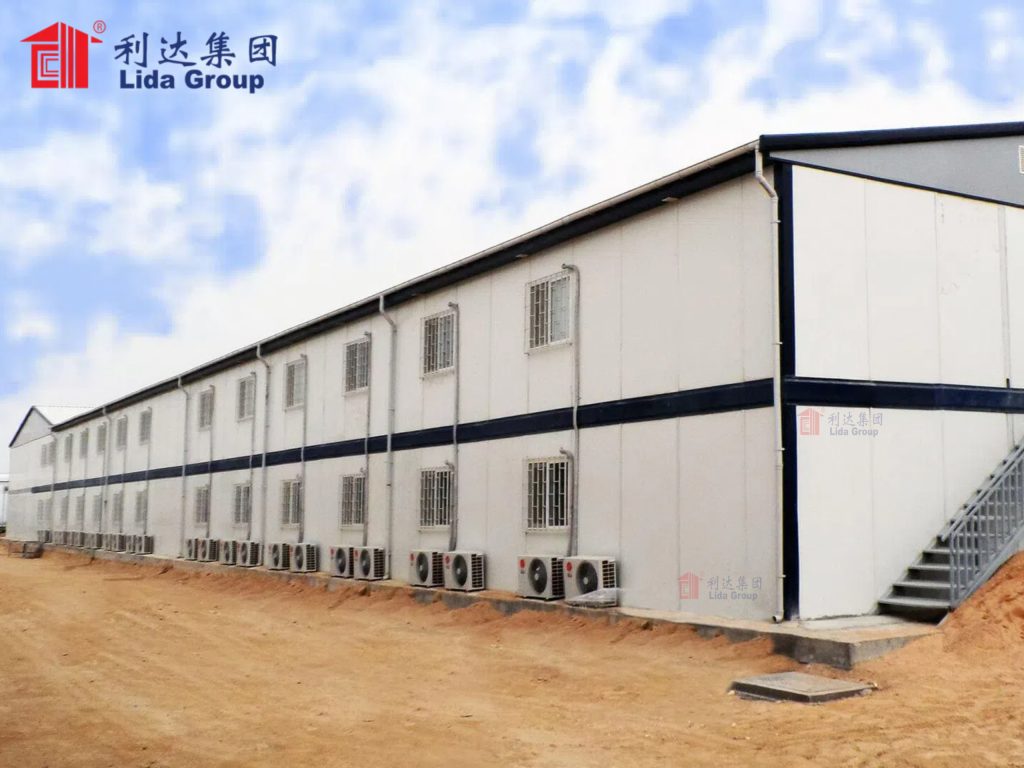
**Conclusion**
Lida Group’s Smart Mobile Modern Container House is more than an innovative housing solution; it is a bold reimagining of how we build, live, and interact with our environment. By pioneering eco-friendly prefabricated container buildings, the company has addressed some of the most pressing challenges of the 21st century: climate change, urbanization, housing affordability, and resource scarcity. Through a combination of sustainable design, advanced engineering, and smart technology, Lida Group has created a product that is not only functional and aesthetically pleasing but also environmentally responsible and economically viable.
The success of the Smart Mobile Modern Container House lies in its holistic approach. It begins with the intelligent reuse of materials, continues through efficient manufacturing and energy-conscious design, and culminates in a living space that empowers users through connectivity and control. This integration of sustainability, mobility, and innovation sets a new benchmark for the construction industry.
As the world continues to grapple with the need for resilient and adaptable infrastructure, Lida Group’s vision offers a clear path forward. The Smart Mobile Modern Container House is not just a product of the future—it is a solution for today. By demonstrating that sustainable living can be stylish, comfortable, and accessible, Lida Group is inspiring a new era of responsible construction and redefining what it means to call a place home.

Related news
-
Cost-Effective Urban Expansion Through Lida Group's Innovative Prefabricated Container Building and Modern Container House Projects
2025-09-26 17:19:15
-
Transforming the Logistics Landscape: Lida Group's Innovative Approach to Steel Frame Warehouse Construction
2025-09-25 11:38:44
-
Lida Group Sets New Standards for Safety and Reliability in Steel Structure Construction Projects Worldwide
2025-09-25 11:33:39
contact us
- Tel: +86-532-88966982
- Whatsapp: +86-13793209022
- E-mail: sales@lidajituan.com


